BPMN - Fundamentals



In BPMN, there is no direct diagrammatic notation for drawing a process on its own. Indeed, either the process' content is drawn “as is”, i.e., a BPMN process diagram or several processes' content are drawn with communications between each other, i.e., a BPMN collaboration diagram (a.k.a. BPMN orchestration diagram)
From ver 2.x of BPMN, a BPMN conversation diagram (example*) is an infrastructural (summarized) vision of a BPMN collaboration diagram while a BPMN choreography diagram (example*) puts forward interaction coordination as a whole
In short, a BPMN conversation diagram shows the “network infrastructure” while a a BPMN choreography diagram shows how this network infrastructure is used in terms of “business interaction protocol”
As described, these new BPMN diagram types only aim at bringing out more readability and thus comprehensibility without any introduction of essential (new) notation

Notation allows markers as
sub-conversation ,
multi-instance
, etc
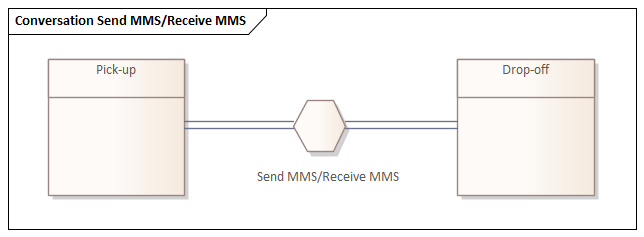

Choregraphy: the way FSC and PSC exchange to each other


A BPMN pool generally has a name. It is a support of a running process. For example, a case of Customer Relationship Management (CRM) may be modeled by means of a customer pool and a supplier pool. The interaction between the customer and the supplier BPMN processes makes up a BPMN collaboration diagram

A BPMN lane generally has a name. It is a well-identified part of a running process (and graphically depicted “as is” within an inner rectangle).
Lanes can be further subdivided by lanes.
Contrary to a BPMN pool, a BPMN lane is a deliberately isolated functional part of a process that may
be viewed as a specific role or responsibility in terms of workflow
A BPMN lane appears or disappears at design time according to business objectives: BPMN processes' shapes change for improvement and lanes play a great role in this changeability for management efficiency
*An interesting analysis on modeling heuristics about BPMN pool versus BPMN lane is ☛

The size of a BPMN model often requires a collapsed view (a.k.a. black-box view) of its interacting BPMN pools

A BPMN activity is a functional unit whose name is preferably a verb (imperative mode) to make feel an action in the designed process. A BPMN activity is part of a BPMN pool or, a BPMN lane of a BPMN pool when lanes are used


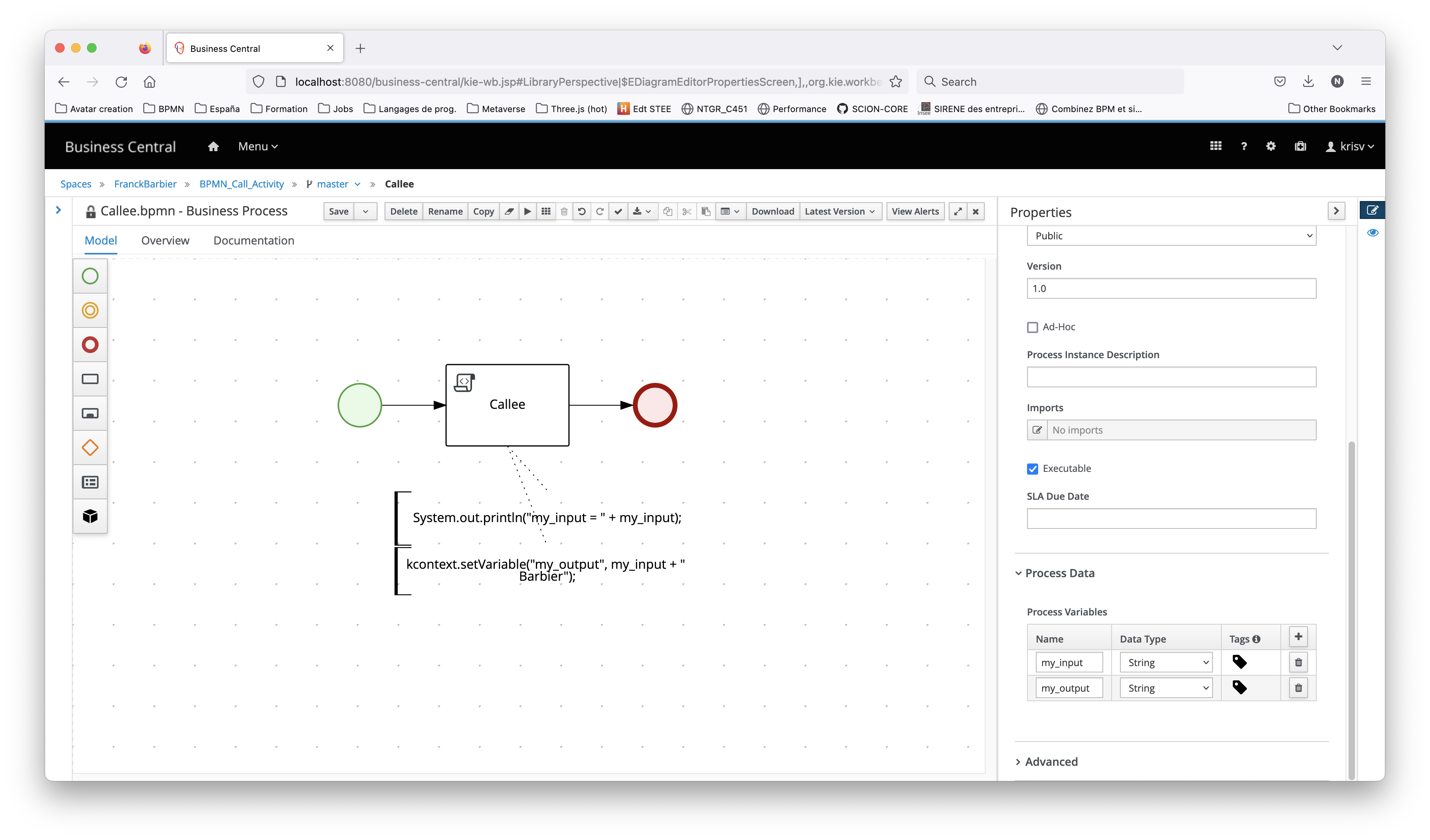

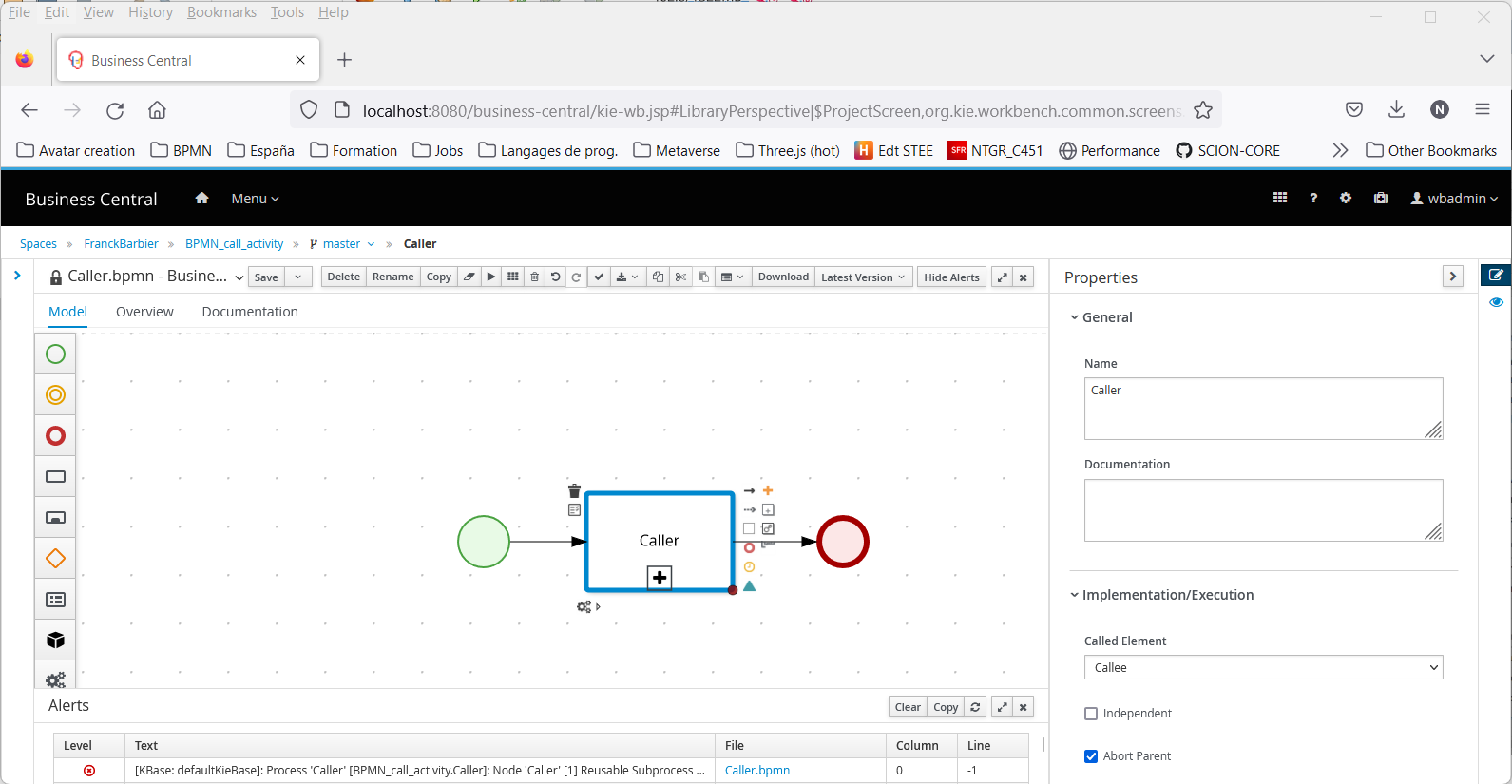

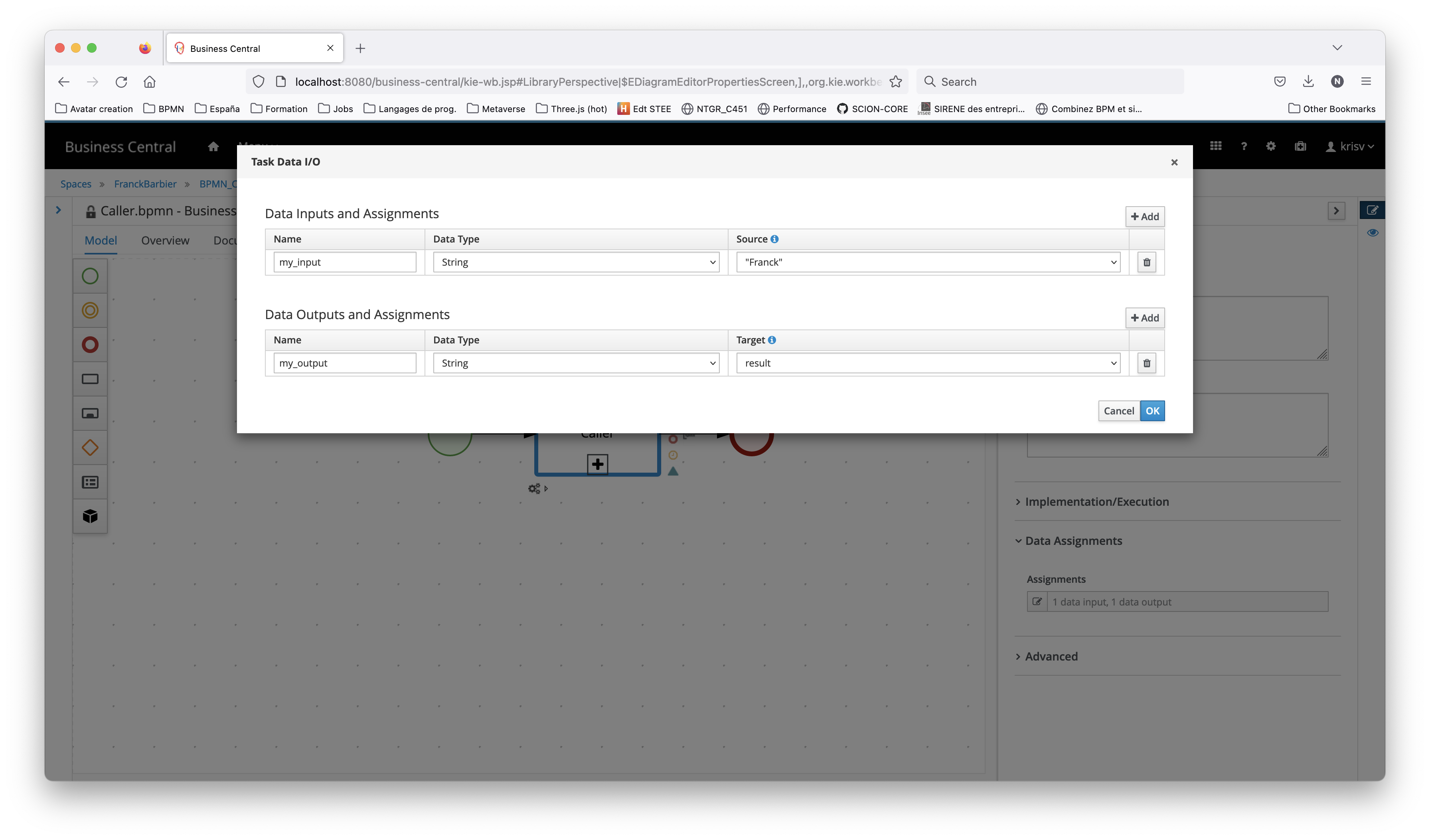

A BPMN sequence flow -▶ is a key notational construct for showing progress within a business process. Functional and behavioral elements of a business process dependent on each other; so, flows mark business dependencies. Besides, flows optionally carry data to irrigate business organizations



*This two-lane model has implicit behavior: subprocess has no start event and no end. No start event (global process) leads to indeterminism at start time…
Download bpmn.io ☛ .bpmn file
![]() ,
Bizagi Modeler
,
Bizagi Modeler .bpm file
![]() ,
CATIA Magic
,
CATIA Magic .mdzip file
![]()

Work task,
merging for that the two extant Work (1st part) and Work (2nd part) tasks!
Tip: use a gateway…



BPMN control flow ○⚋▷ and BPMN message flow ○⚋ ✉ ⚋▷ share the same semantics


Theoretically, an event is an external phenomenon with a null duration. The opposite notion is that of state (i.e., BPMN activity). Usually, “event” implies “caught event occurrence” although BPMN also supports the idea of “thrown event occurrence”
Events like activities and gateways are known as “flow objects” in BPMN.
Event entries (except* BPMN start events )
and event exits (except* BPMN end events
)
are BPMN sequence flows -▶
*There are other minor exceptions

*Notation is sometimes a simple circle whose thickness is between “start” (thin) and “end” (thick)

Download bpmn.io ☛ .bpmn file
![]()

Tokens match to execution paths, which are often multiple! Processes terminate when all (inner) execution paths become inactive

BPMN makes a distinction between event reception (the idea of BPMN caught event)
and event emission (the idea of BPMN thrown event), for instance, BPMN intermediate caught message event
and BPMN intermediate thrown message event
For the sake of clarity, in a conceptual spirit, it is more opportunistic to view the notion BPMN thrown event as that of “activity” in general and not as that of “event” in a theoretical sense
As a result, BPMN control flows ○⚋▷ and
BPMN message flows ○⚋ ✉ ⚋▷
aim at connecting BPMN thrown events to BPMN caught events across BPMN pools, typically,
○⚋▷
*
(signals) or
○⚋ ✉ ⚋▷
(messages)
*In principle, this notation between signals is not BPMN-compliant, but it may be tolerated to make communication flows more readable

BPMN start events ,
BPMN intermediate events
,
and BPMN end events
aim at being specialized*
*By default, throughout this tutorial, BPMN intermediate caught events are depicted when discussing event triggers (e.g., error, timer, etc.) in a general-purpose way

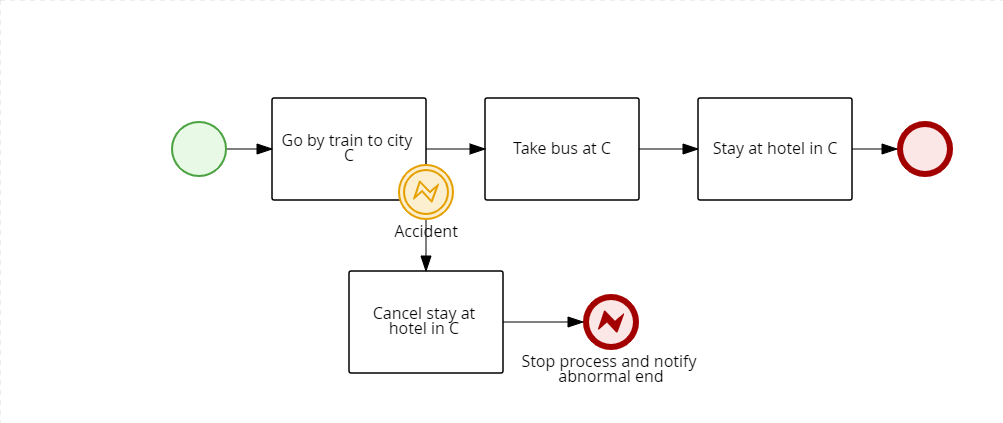
*Status can be interrupting only
Download Kogito ☛ .bpmn file
![]()

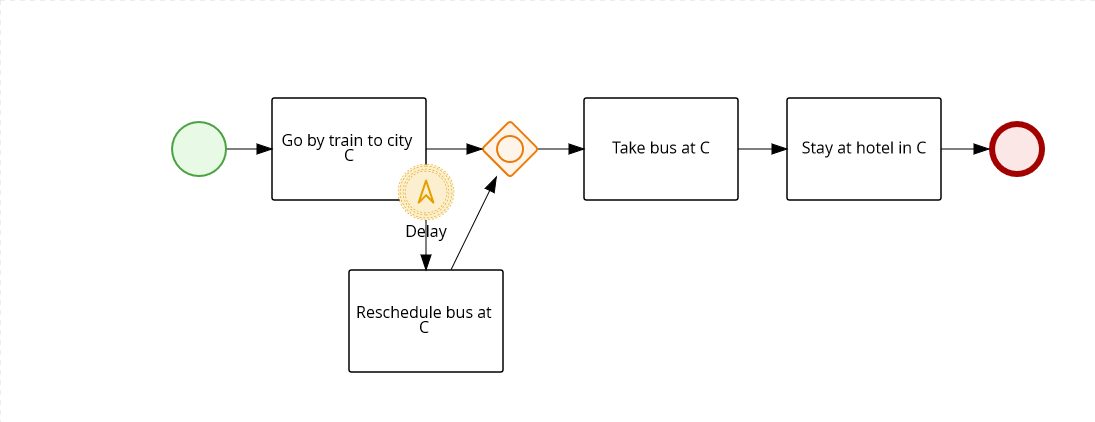
Download Kogito ☛ .bpmn file
![]()

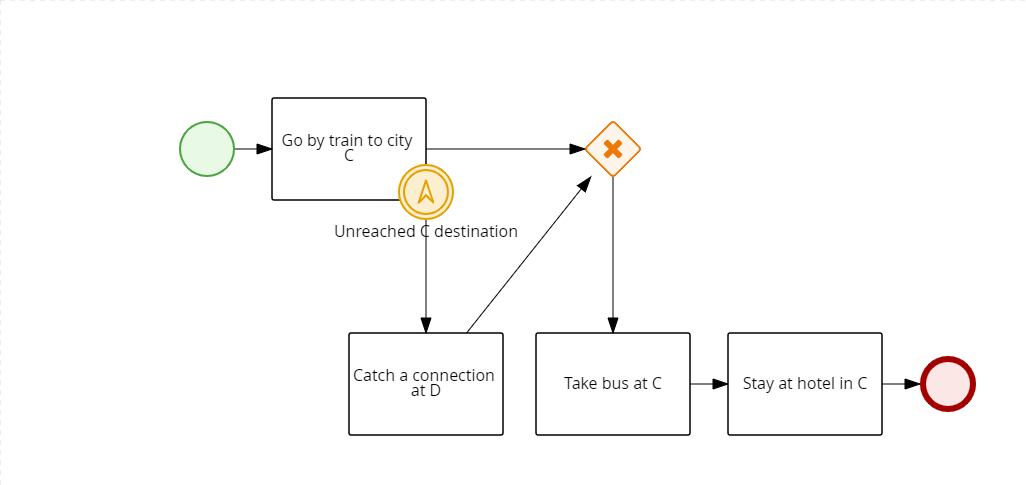
Download Kogito ☛ .bpmn file
![]()


Download Kogito ☛ .bpmn file
![]()


*The relationship between a BPMN compensation event
and its compensation activity is not fully part of the process' execution flow:
a BPMN association ⇢ (instead of a BPMN sequence flow -▶)
is used to connect the BPMN compensation event
with the compensating activity.
In contrast, a BPMN compensation end thrown event
is part of the process' execution flow
to trigger the compensation
Download bpmn.io ☛ .bpmn file
![]()

*In BPMN, the concept of BPMN thrown timer event is meaningless
**ISO 8601 standard ☛ is used in BPMN platforms to formally express durations and dates

Download bpmn.io ☛ .bpmn file
![]()

Download bpmn.io ☛ .bpmn file
![]()

Download bpmn.io ☛ .bpmn file
![]()


Download bpmn.io ☛ .bpmn file
![]() ,
CATIA Magic
,
CATIA Magic .mdzip file
![]()

Other specializations** of BPMN start events ,
BPMN intermediate events
,
and BPMN end events
*This example is ambiguous: the exit flow from Check Application is not explicitly the boolean opposite of Application changed?
**By default, throughout this tutorial, BPMN intermediate caught events are depicted when discussing event triggers (e.g., error, timer, etc.) in a general-purpose way

Download bpmn.io ☛ .bpmn file
![]()

*This notation between signals is not BPMN-compliant. Nevertheless, it may be tolerated to make communication flows more readable

Download bpmn.io ☛ .bpmn file
![]()



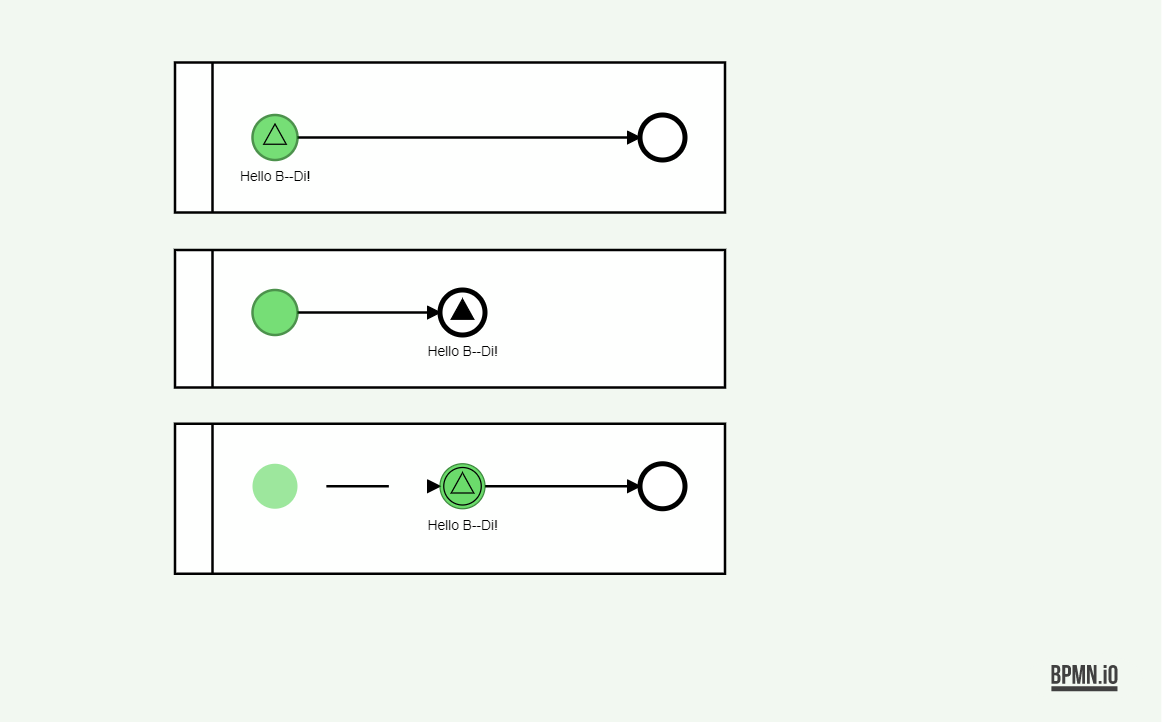



Download bpmn.io ☛ .bpmn file
![]()

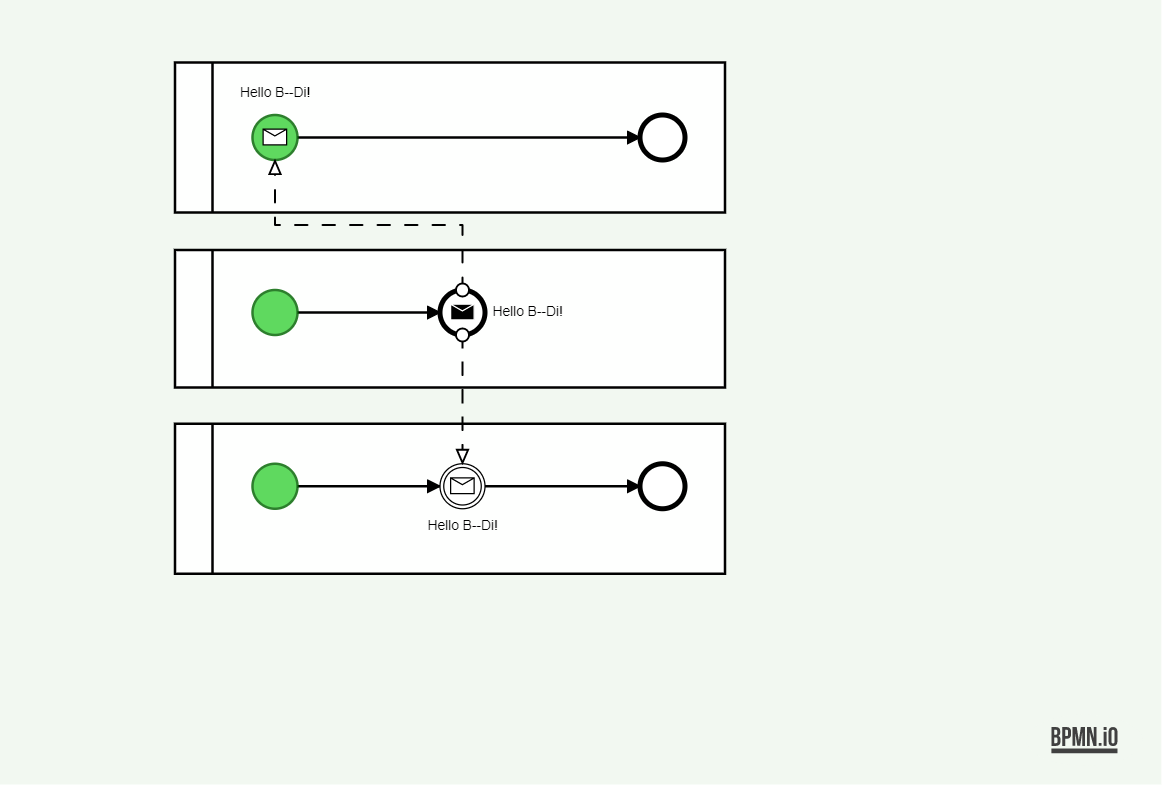

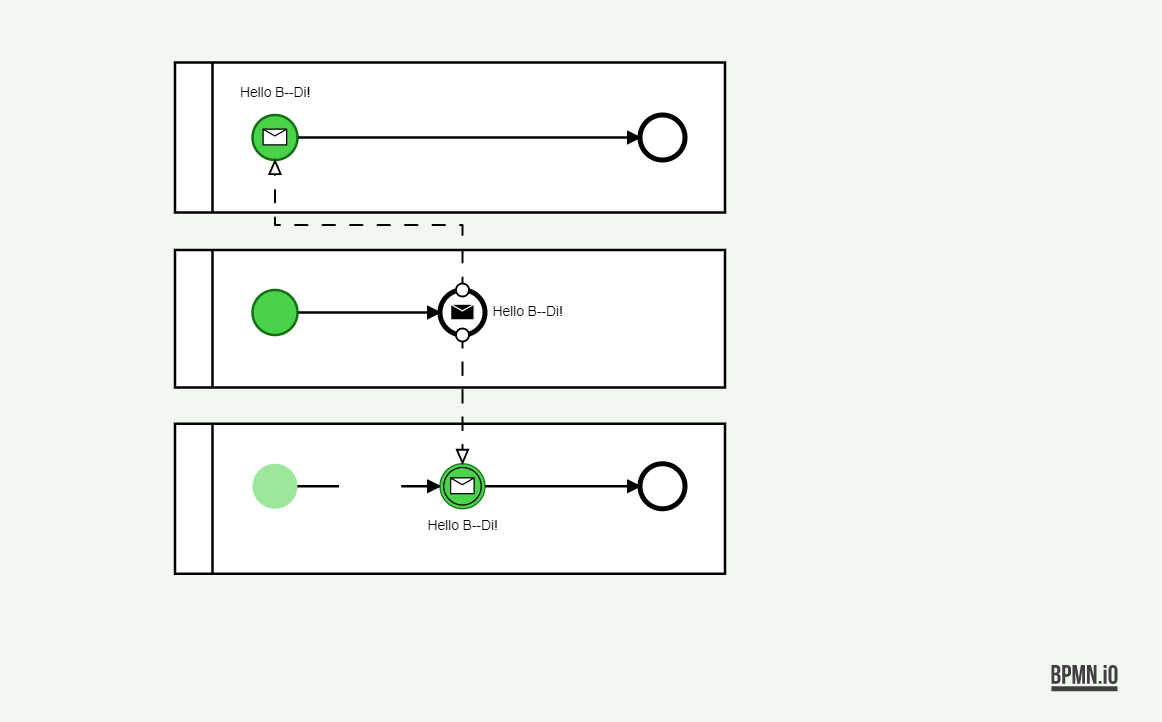

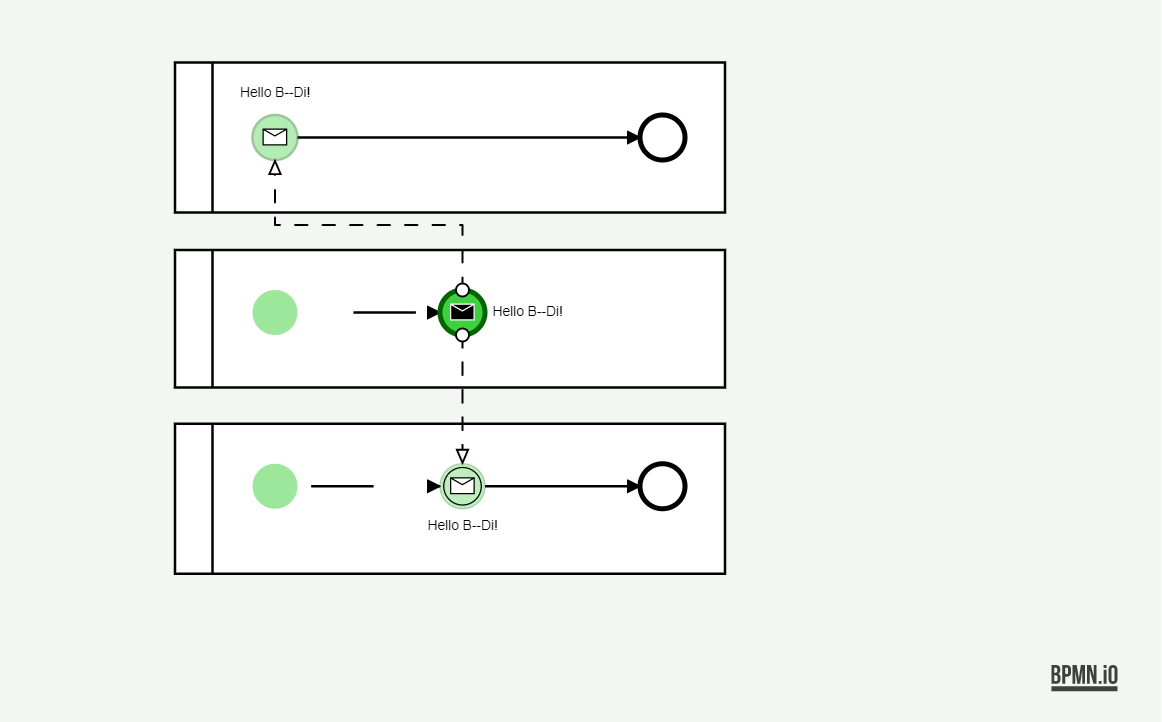

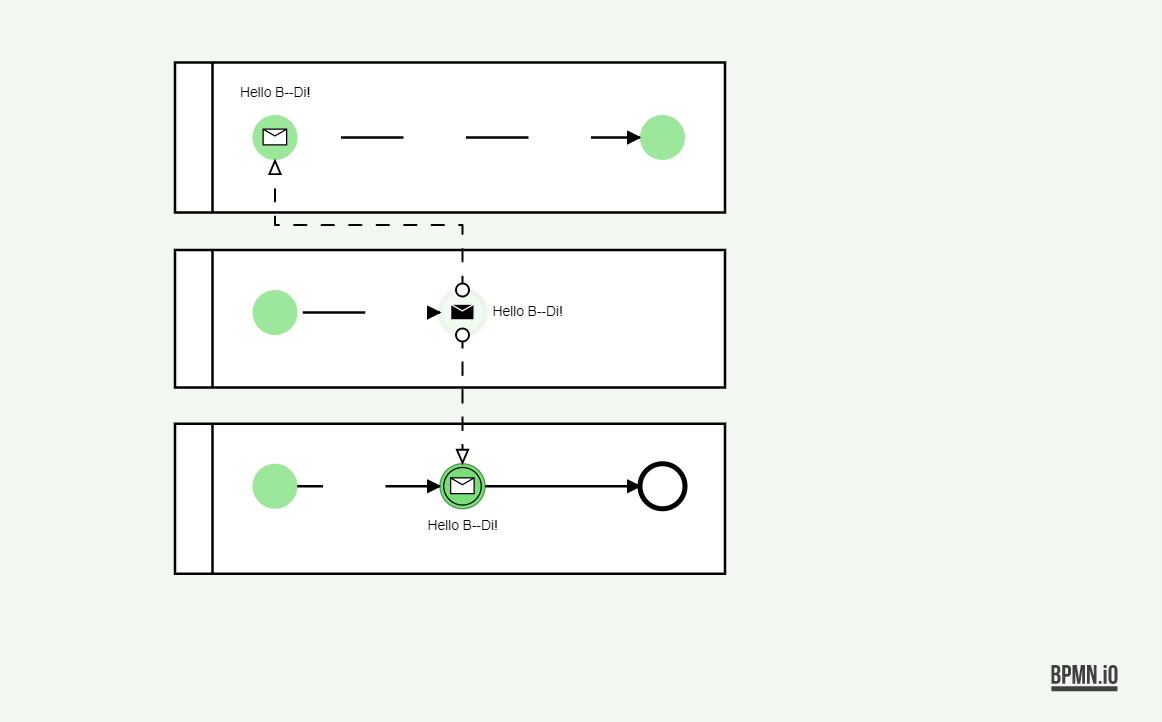

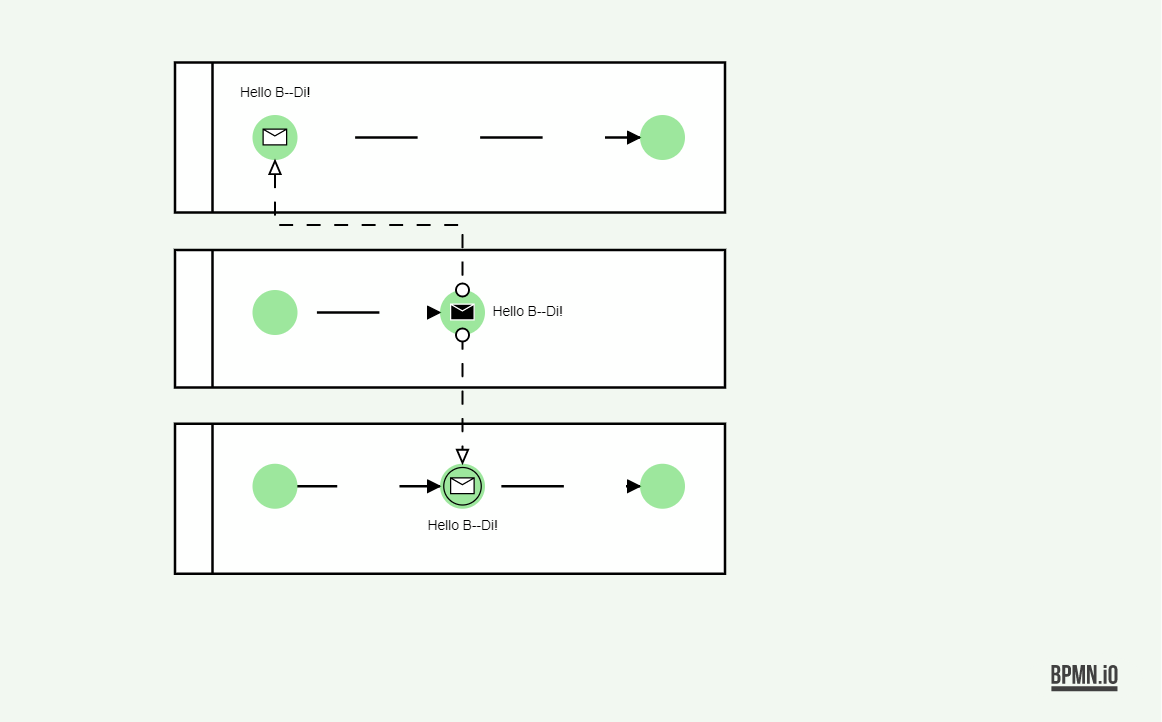

Download bpmn.io ☛ .bpmn file
![]()

Quote ☛



Second-class specializations* of BPMN start events ,
BPMN intermediate events
,
and BPMN end events
exist
*By default, throughout this tutorial, BPMN intermediate caught events are depicted when discussing event triggers (e.g., error, timer, etc.) in a general-purpose way

Download bpmn.io ☛ .bpmn file
![]()

BPMN multiple event
(XOR) is poorly supported in editors & platforms.
It aims at replacing all 3 events on the left hand side model*

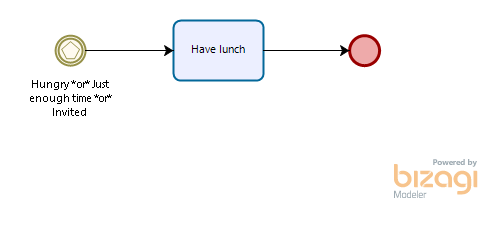
*Exclusion when entering Have lunch is only intuitive

BPMN parallel multiple event
(AND) aims at replacing all 3 events on the left hand side model
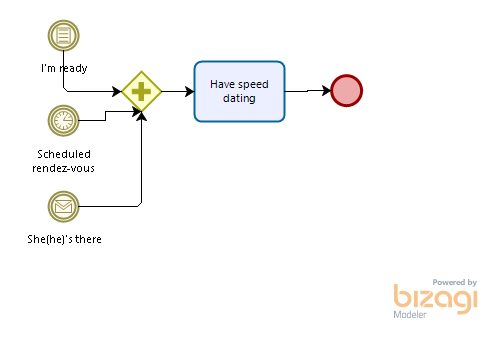
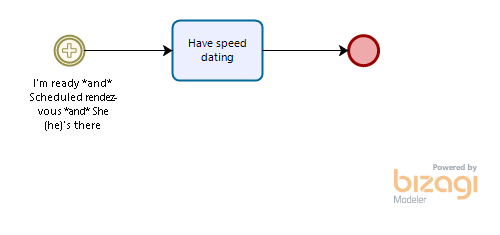

A BPMN caught event can be interrupting or not. A dashed-line circle (double circle for BPMN intermediate caught event) means “non-interrupting”. Interruptibility** is systematically linked to the notion of BPMN boundary event ☛
*Interruptibility only makes sense for “received” events
**Note that some types can never be “non-interrupting”,
e.g., BPMN intermediate caught error event

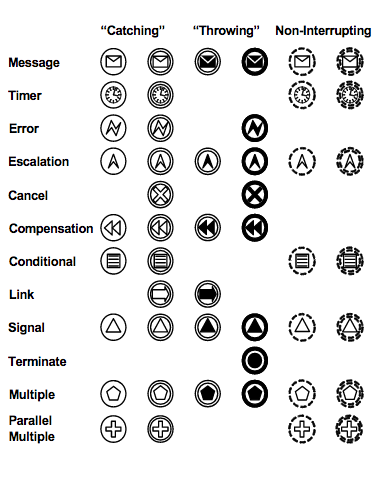


A chemistry process requires enhanced capabilities in order to be better controlled. Namely,
the suite of the three first tasks must not last more than 1 min. If so, the process stops… Moreover,
an external decision may stop the waiting task to restart the process at the first Heat task… Finally,
the last Heat task may fail in a “unexpected way”…





Download bpmn.io ☛ .bpmn file
![]()

A BPMN exclusive gateway establishes the path taken by a BPMN flow. Outgoing flows have conditions (a possible default flow as well) to compute execution paths in business processes. A synthesis about the possible BPMN gateway types in BPMN is ☛ or ☛

A BPMN gateway with possible/systematic parallelism establishes the path(s) triggered by BPMN flows. Inclusive gateways have conditions (a possible default flow as well) while parallel gateways have not
FORK (flow divergence) often requires an associated JOIN (i.e., another BPMN inclusive gateway FORK (flow divergence) often requires an associated JOIN (i.e., another BPMN parallel gateway 
Download bpmn.io ☛ .bpmn file
![]()

Download bpmn.io ☛ .bpmn file
![]()

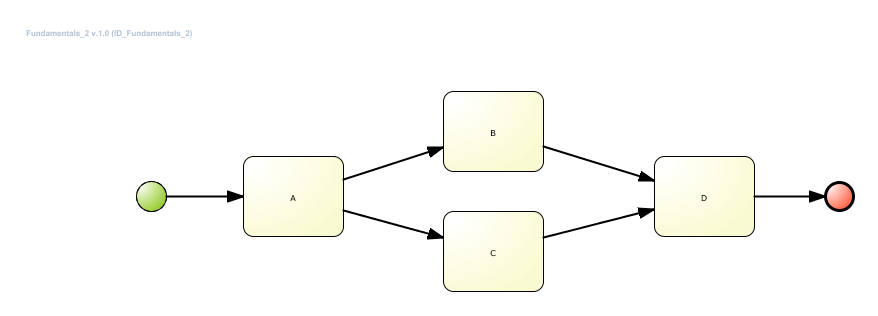
*A BPMN task has at most one incoming flow (error on
D entry) and
a BPMN task has at most one outgoing flow (error on
A exit)

FORK*)*While these two model pieces are known as equivalent, model on the top has to be preferred because of its explicit nature
**Conditions as properties of the outgoing flows of a BPMN parallel gateway
are not allowed (OCEB 2 Certification Guide, Second ed., p. 120)

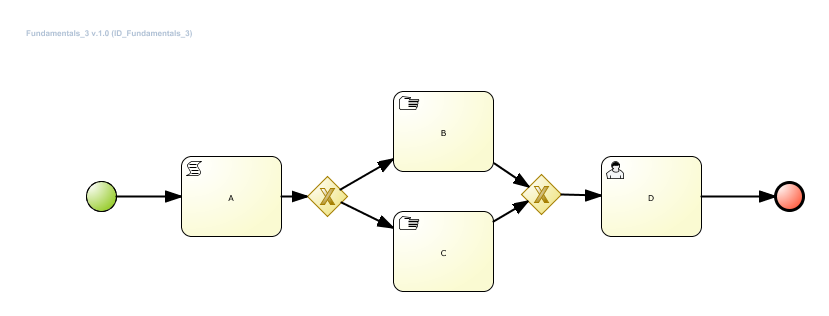

JOIN versus JOIN based on
BPMN exclusive gateway
*The model piece on the left hand side is both shaky and unclear in the sense that the Prepare & serve Bolognese sauce
might be executed twice: “If several sequence flows end in an activity, each incoming token triggers the activity.” (OCEB 2 Certification Guide, Second ed., p. 98)
The model piece on the right hand side is non-equivalent

A BPMN complex gateway
has to be used when conditions cannot be expressed in “common logic”.
Tricky business rules correspond to such a situation
*In the BPMN official doc. ☛ complex gateways are declared close to inclusive gateways

Download bpmn.io ☛ .bpmn file
![]()

Download bpmn.io ☛ .bpmn file
![]()


The BPMN event-based gateway type
(start or intermediate) relies on events instead of conditions
 (AND semantics, start only)
(AND semantics, start only)
*See The Pizza Collaboration case study -PDF- ☛, p. 4
**A BPMN receive task is permitted as well

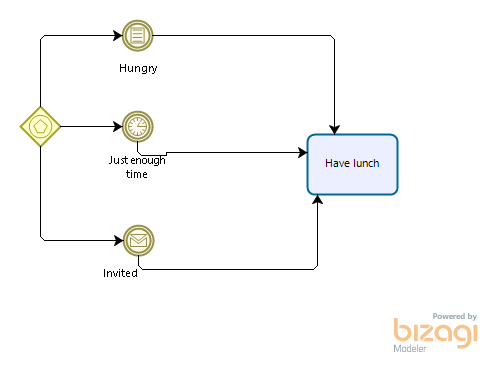

 ⤳ example
⤳ example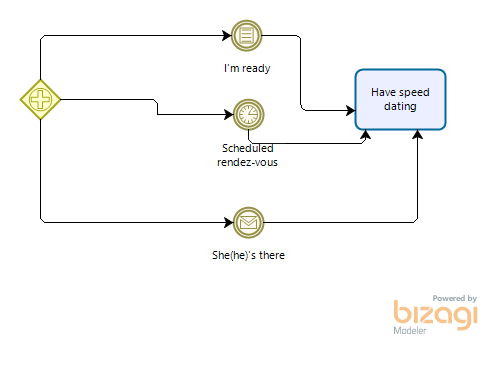
*Please note that the Have speed dating task is executed
once


*BPMN parallel event-based gateway: start only!


Download bpmn.io ☛ .bpmn file
![]()

A BPMN annotation is a BPMN model element without interpretation scope in terms of execution. By definition, an annotation is expressed in natural language*
and is bound to one or more execution-meaningful BPMN model elements
A BPMN group ![]() allows
the isolation (by surrounding**) of a given set of BPMN model elements for easier readability, even comprehensibility
Similar to a BPMN annotation
allows
the isolation (by surrounding**) of a given set of BPMN model elements for easier readability, even comprehensibility
Similar to a BPMN annotation , a BPMN group
![]() has no interpretation scope in terms of execution
has no interpretation scope in terms of execution
*Commenting on BPMN models
is obviously useful. Nonetheless, the presence of numerous BPMN annotations
may show, even prove, the designer's incapacity of precisely and completely modeling
all issues of a business process… So, be careful about any excessive use
**Note that a group may cross over pool boundaries


Télétravail (in French) ☛
Clinique (in French) ☛ ⤳ digital signature, Business Process Analysis -BPA-, platform implementation


“Abstract” BPMN tasks
are the basic notation for tasks, but specializations are possible*
*An interesting analysis of the types and usages of
BPMN tasks
is ☛

Three types of BPMN task
embody Information Technology -IT- concerns (e.g., programming)
<script>…</script>in Activiti) that runs
in the BPMN process engine's thread of control



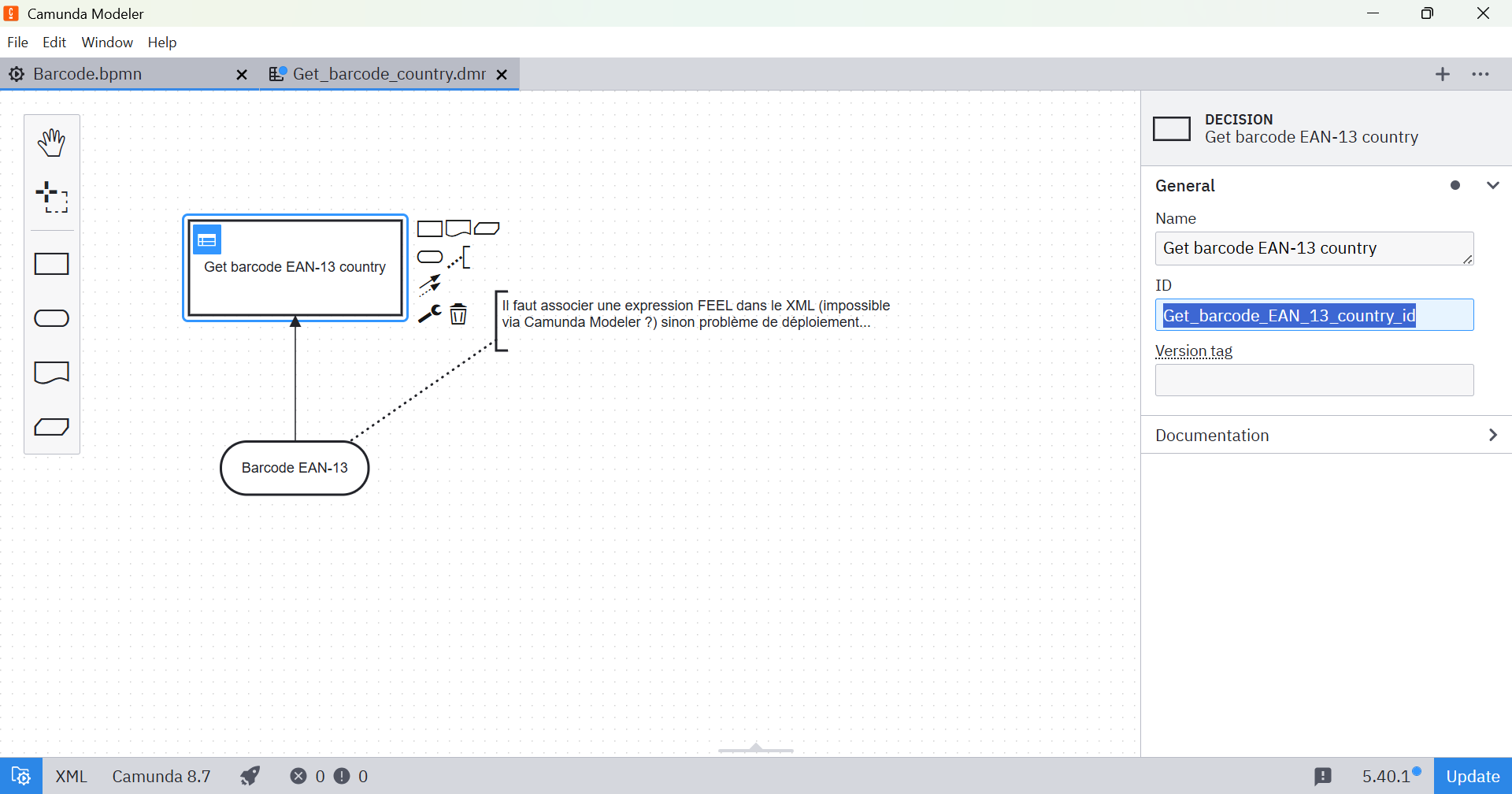



The idea of BPMN message task
creates confusion with that of BPMN message event
.
Despite some redundancy,
a BPMN boundary event may be attached to BPMN message task
to catch any event (typically an error) that may occur within the task of message emission or message reception.
Moreover, these BPMN markers
may be used to model multiple
message emissions or message receptions

While receive tasks
may have boundary events, they *CANNOT* in the case they act as outgoing elements of event-based gateways
*BPMN official doc. ☛ p. 297

A BPMN embedded subprocess
(example*)
is fully part of the execution scope of its wrapping process in the sense that they share data. This is the key difference with a
BPMN call activity
(data must be explicitly transferred at calling time)
*Morning embedded subprocess ☛

*This is scenario 1. (scenario 3. is equivalent while scenario 2. is not: D is executed twice)

A BPMN event subprocess
is a self-contained subprocess that starts from an -interrupting or not- (BPMN official doc. ☛ p. 440) event
that may be thrown within its enclosing activity
A BPMN event subprocess completes in
an autonomous way and has access to the execution context of its enclosing activity

Download bpmn.io ☛ .bpmn file
![]()

Download bpmn.io ☛ .bpmn file
![]()

BPMN activities may have BPMN markers to become more specific

A BPMN activity (BPMN task ,
BPMN call activity
,
BPMN embedded subprocess
, or
BPMN transaction subprocess
)
may be equipped with a BPMN marker
to make it a BPMN multi-instance activity.
BPMN markers are (in an exclusive way):
;
activity' executions are stopped by textual conditions (no graphical counterpart)
n times and the n executions occur in parallel
n times and the n executions occur in sequence
*Contrary to parallel multiple and sequential multiple
, loop
aims at processing the same data collection instance


Download Kogito ☛ .bpmn file
![]()

Download bpmn.io ☛ .bpmn file
![]()

A BPMN transaction subprocess
☛
aims at grouping several activities as a whole: they all succeed or fail with respect to the subprocess execution scope

Download bpmn.io ☛ .bpmn file
![]()

A BPMN default sequence flow
may be used for marking the exit of a BPMN activity or a BPMN gateway
true
*From a forking
BPMN inclusive gateway or
BPMN exclusive gateway
, a
BPMN sequence flow -▶ should necessarily be endowed with a conditional expression that has no graphical counterpart

A BPMN conditional sequence flow
may act as a substitute for a BPMN inclusive gateway
or
a BPMN exclusive gateway
According to the BPMN official doc. ☛ p. 32,
a conditional flow
should only be used when leaving a BPMN activity* (OCEB 2 Certification Guide, Second ed., p. 106).
This means that, in a unexpected sense, this activity's exit is constrained by a conditional expression that is symbolized by the white diamond
*Note that several BPMN conditional sequence flows
being true when leaving
a BPMN activity create as many as execution tokens: some parallelism in other words!
Contrary to a a BPMN exclusive gateway
,
mutual exclusion is not compulsory


In the Shipment Process of a Hardware Retailer case study (PDF ☛, p. 3), the flow labeled Always
implicitly has true as underlying condition. To that extent, the flow labeled extra insurance required towards Take out extra insurance is optional.
Would it be correct (as done below) to change this flow to a BPMN default sequence flow ?

FORK and JOINBy construction, a BPMN gateway can fork either an incoming flow into multiple outgoing flows or join multiple incoming flows into an outgoing flow. Best practices associated with such an approach are exposed in a document accessible from ☛
It is important to notice that a JOIN gateway may be used to merge flows,
which have not necessarily been split by a similar FORK gateway
(sample ☛)
FORK and JOIN make little sense
for a BPMN event-based gateway



JOIN? Why not…
FORK and JOIN ⤳ non-conformance



JOIN without FORK
Download bpmn.io ☛ .bpmn file
![]()

FORK and JOIN ⤳ execution consistency issues*
*Execution imposes well-formed models (a.k.a. “workflow patterns”).
Note that the following model does not actually foster well-formedness (the expected “closing” gateway should be
exclusive
instead of
inclusive
)

FORK and JOIN ⤳ probable execution inconsistency

FORK and JOIN ⤳ dead lock*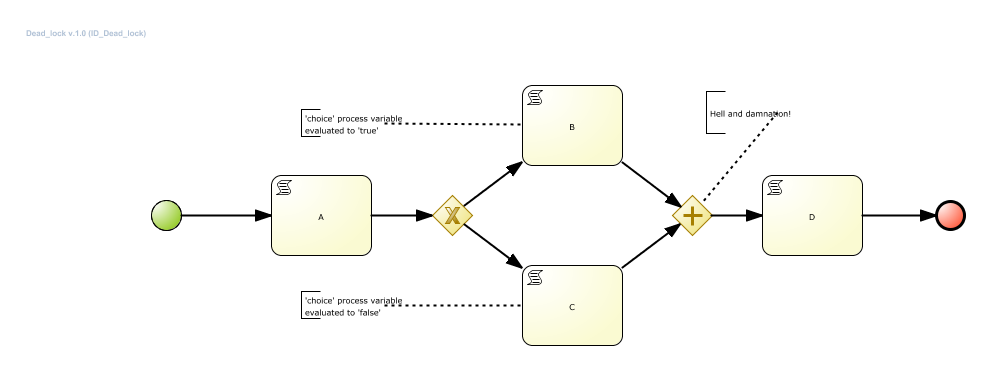
*Design error risks (example ☛)
come from “larger” models: a JOIN imposed by a FORK
is located at a distant place

JOIN for BPMN exclusive event-based gateway

Fundamentally, a BPMN association ⇢ links a
BPMN data object
to a BPMN activity, BPMN event or BPMN gateway
(OCEB 2 Certification Guide, Second ed., p. 142)
A BPMN association ⇢ may also connect a
BPMN data object with a
BPMN sequence flow -▶.
In this case, the BPMN association ⇢ loses its direction (i.e., no ending arrow: ⁞)

BPMN supports data and data flow descriptions is a limited way. The notion of BPMN association ⇢ allows the connection of data as inputs and/or outputs* of a BPMN activity, BPMN event or BPMN gateway
A key issue is the fact that a BPMN activity having an inbound BPMN data object
cannot be executed until data are available.
Further detail on the use of BPMN data object
and
BPMN association ⇢ may be found ☛
*Optionally, states of data objects may be noted between square brackets, e.g., [Confirmed], to establish data objects' status before (as inputs) or after (as outputs)
execution



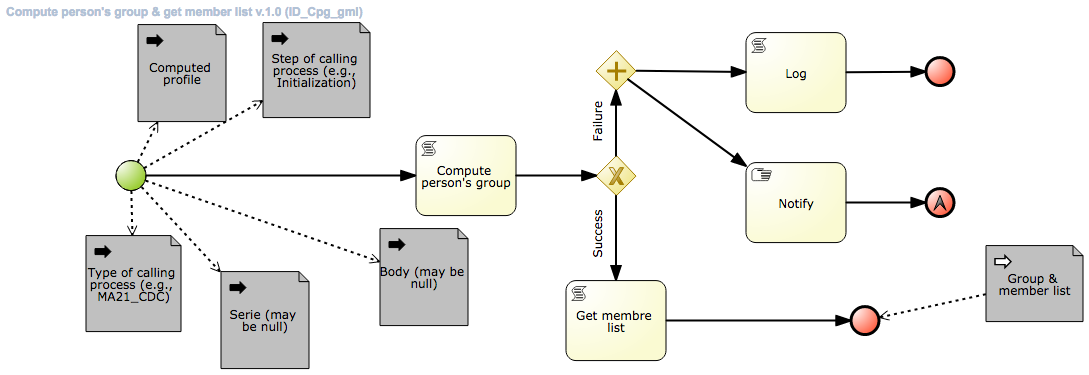

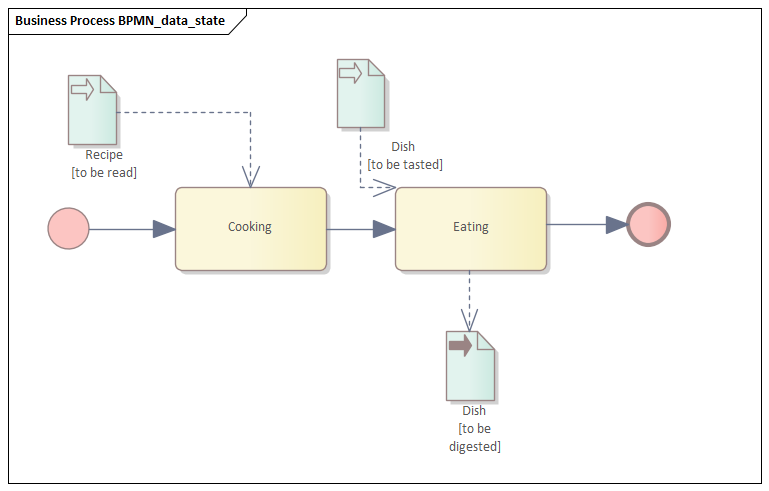



A decision includes a decision table whose expressions are based on Friendly Enough Expression Language -FEEL- ☛


The concept of DMN Business Knowledge Model is controversial
(see also ☛)
in the sense that a DMN Business Knowledge Model (e.g., Determine programming language)
is nothing else than a small-size decision
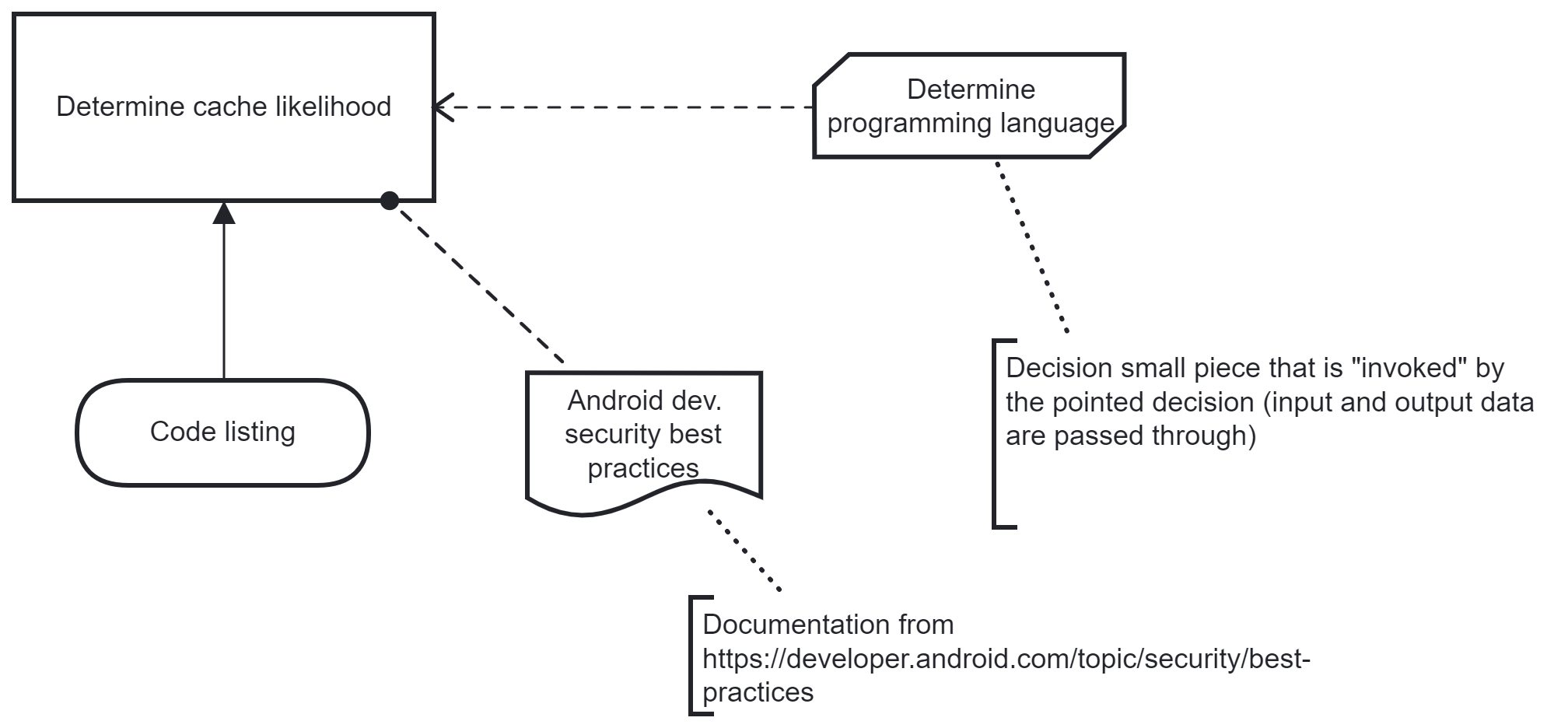

A DMN Business Source (e.g., Android dev. security best practices)
has no impact on the inference of a decision. It just states a context in which inference occurs


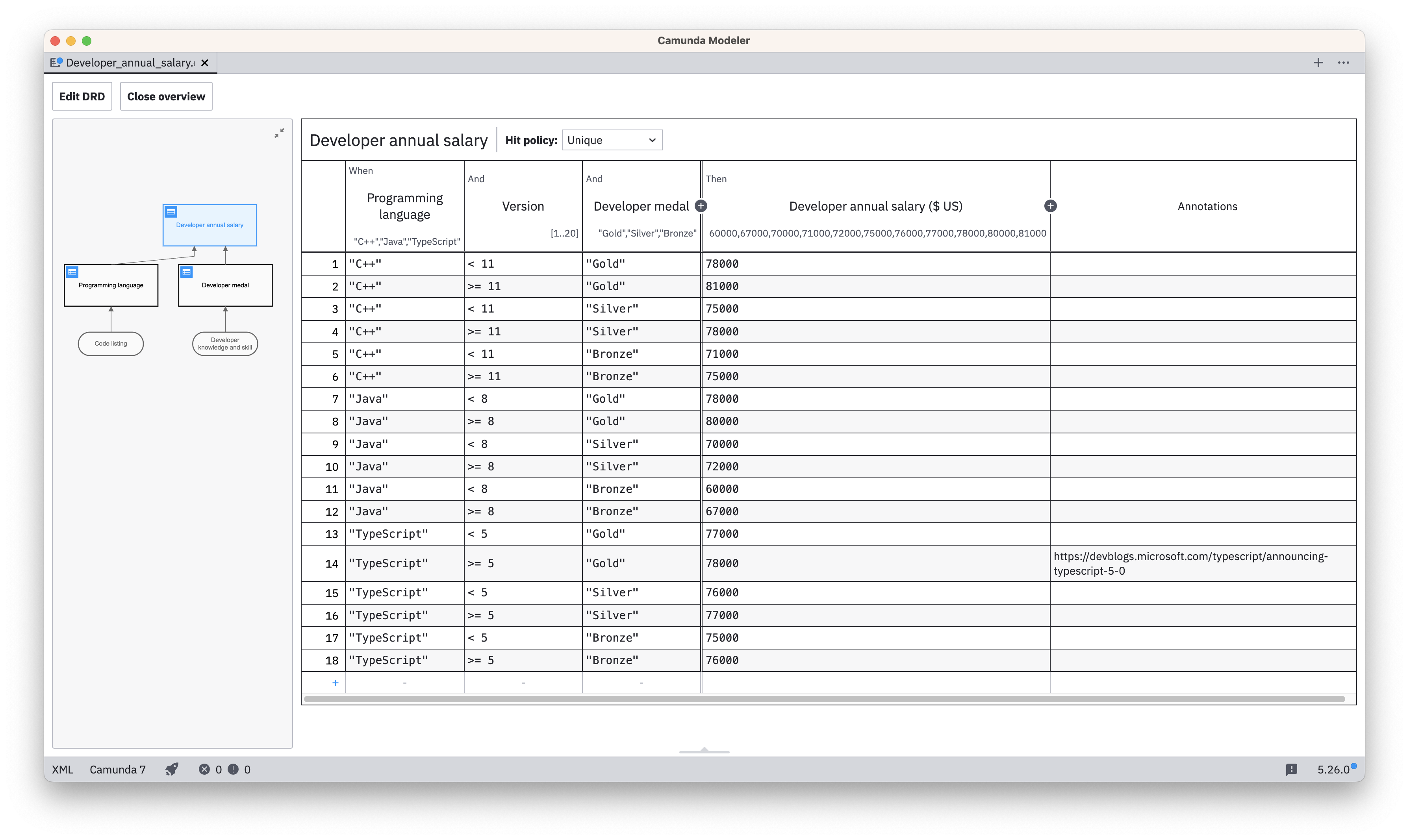

{"?" : "Franck René Pierre Barbier"}
count(split(?,"\\s"))
4
{"?" : "Franck René Pierre Barbier"}
contains(?,"Franck")
true
*Using FEEL online ☛

Unique: XOR semantics ⤏ rule overlapping raises problem
First (from top to bottom): XOR semantics ⤏ rule overlapping does not raise problem
Priority: XOR semantics ⤏ rule overlapping does not raise problem provided that priorities have distinct values
Any: XOR semantics ⤏ rule overlapping does not raise problem provided that inferred rules must lead to the same result

New York City Museum Of Modern Art -NYC MOMA- ☛ ⤳ real business case, synchronization issues
Barbados Crisis Management System -BCMS- ☛ ⤳ collaboration issues